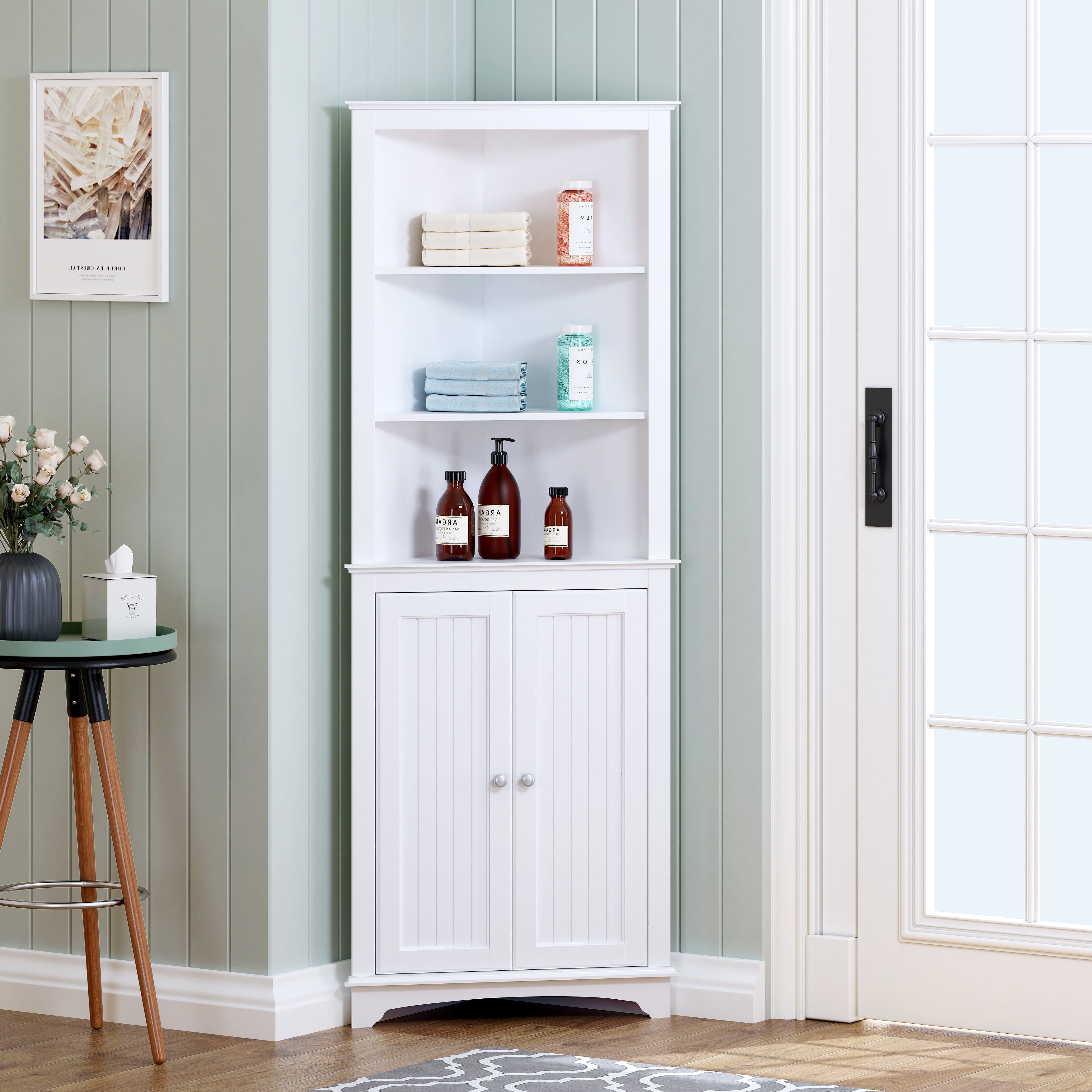Installation and Maintenance: White Corner Bathroom Cabinet

Choosing and installing your new white corner bathroom cabinet is a pretty big deal, especially if you’re aiming for that sleek, modern Makassar vibe. Getting it right means a bathroom that’s both stylish and functional for years to come. This section covers the installation process, proper maintenance, and some tips to avoid common problems.
Step-by-Step Installation Guide
Proper installation is key to ensuring your cabinet’s longevity and preventing issues down the line. Remember safety first! Always wear appropriate safety gear, like gloves and safety glasses.
- Preparation: Measure the space carefully and check the cabinet dimensions to ensure a perfect fit. Mark the wall where the cabinet will be mounted. Gather your tools: stud finder, drill, level, screwdriver (Phillips and flathead), appropriate screws and wall anchors (depending on your wall type), measuring tape, pencil, and potentially a helper.
- Locate Studs: Use a stud finder to locate wall studs. Securing the cabinet directly to studs provides the strongest and most stable mount. If studs aren’t conveniently located, use appropriate wall anchors designed for the weight of your cabinet.
- Mark and Pre-Drill: Mark the screw locations on the wall based on the cabinet’s mounting holes. Pre-drill pilot holes to prevent cracking the wall or damaging the cabinet. This is especially crucial if you’re working with tile or other hard surfaces.
- Mount the Cabinet: Carefully hold the cabinet in place against the marked spots, ensuring it’s level. Attach the cabinet to the wall using the appropriate screws and anchors. If working with a heavy cabinet, have a helper assist to prevent accidental drops.
- Final Checks: Once installed, double-check that the cabinet is level and securely fastened. Inspect all screws to make sure they are tightly secured.
Cleaning and Maintenance Procedures
Keeping your white corner cabinet looking pristine requires regular cleaning and maintenance. Neglecting this can lead to stains, water damage, and a generally less appealing bathroom.
- Regular Cleaning: Wipe down the cabinet with a damp microfiber cloth regularly to remove dust, dirt, and splashes. Avoid harsh chemicals or abrasive cleaners, as they can damage the finish.
- Stain Removal: For stubborn stains, try a mild soap solution and a soft sponge. Gently scrub the affected area and rinse thoroughly with clean water. For tougher stains, consult the manufacturer’s cleaning instructions.
- Drying: Always ensure the cabinet is completely dry after cleaning to prevent water damage. Use a soft, clean cloth to dry thoroughly, paying attention to crevices and corners.
- Preventative Maintenance: Regularly check for loose screws or any signs of damage. Tighten any loose screws and address any damage promptly to prevent further issues.
Preventing Water Damage and Cabinet Sagging
Water damage and sagging are common problems, but with proper care, they are easily avoidable.
- Proper Ventilation: Ensure adequate ventilation in your bathroom to minimize moisture buildup. A well-ventilated bathroom reduces the risk of water damage to your cabinet.
- Avoid Overloading: Don’t overload the cabinet with heavy items, as this can lead to sagging. Distribute weight evenly to prevent stress on the cabinet’s structure.
- Regular Inspections: Regularly inspect the cabinet for any signs of water damage, such as swelling or discoloration. Address any issues promptly to prevent further problems.
- Sealant Application: Consider applying a waterproof sealant to the cabinet’s edges and seams, especially in areas prone to moisture.
Pre-Assembled vs. DIY Cabinet Installation Difficulty, White corner bathroom cabinet
A key decision is whether to buy a pre-assembled or DIY cabinet. This table summarizes the differences:
| Pre-Assembled Cabinet | DIY Cabinet |
|---|---|
| Easier Installation: Simply mount to the wall. | More Difficult: Requires assembly and precise measurements. |
| Faster Installation: Less time-consuming. | Slower Installation: Assembly takes significant time. |
| Less Skill Required: Suitable for beginners. | More Skill Required: Requires carpentry skills and tools. |
| Potentially Higher Cost: Usually more expensive. | Potentially Lower Cost: Materials might be cheaper. |
